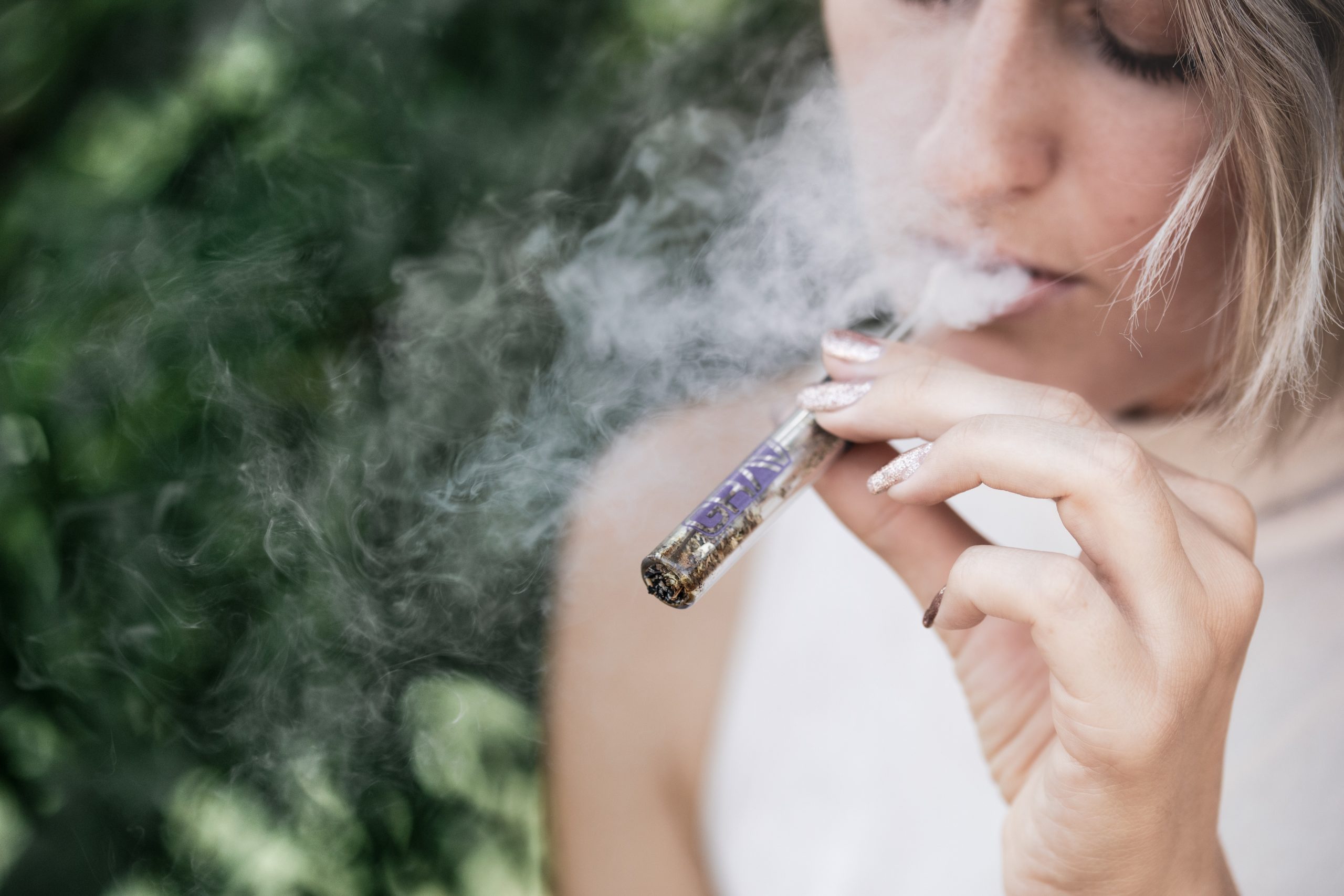Do you like the benefits of cannabis, but are hesitant to try anything that could get you too high? Maybe you stick primarily to CBD medicines, and steer away from anything that contains too much THC, because you want to avoid anything that could alter your mental state? There’s a lot that’s misunderstood about THC and its psychoactive effects. So, let’s begin by explaining the cannabis high, and whether it’s helpful in ways you might not have considered…
The Buzz Behind the Buzz
Some people love the euphoric “high” that comes from cannabis. But for a first-time medicinal user this can be a frightening proposition. Will you be in a dream-like state or unable to function? Will there be any negative side effects?
The fear of a “bad trip” is completely understandable, especially when cannabis is new to you and you’re not yet familiar with all the strains and how they affect your body. What you may have heard is that CBD or cannabidiol – one of the main active ingredients of cannabis – has, by itself, very few psychoactive effects. In fact, it can even suppress the effects of THC, or tetrahydrocannabinol, which is the compound mostly responsible for the mood and mind-altering effects associated with cannabis.
Yet, people react very differently to different levels of THC. Some people have enjoyable experiences, while others do not. And though these mechanisms aren’t completely understood, researchers have uncovered some of the science behind why we get high. Understanding this experience may help you better understand your choices around THC vs. CBD.
Explaining the Cannabis High
You might be asking, why do people want to get high in the first place?
THC can have pleasant side effects, such as feeling relaxed, more sensitive to sight, touch, taste and sound, feeling euphoric and creative. On the flip side, there can be negative side effects, which include feeling confused, anxious, paranoid, having a rapid pulse or racing heartbeat, or even in extreme cases, delusional thoughts. The more cannabis you take and the higher the THC content, the more intense the “high” can be, for better or worse.
The way your body processes THC will also affect your experience. In a recent review published by the British Journal of Clinical Pharmacology (Catherine J. Lucas, 2018), Dr. Catherine Lucas explains what happens when THC is processed by the body through either smoking or vaporizing, two of the most common delivery methods. There are 4 steps:
Absorption: Happens right after use. Within minutes, THC concentration in the blood is around 10-30%.
Distribution: THC flows to major organs, including the brain. This is when you will feel the highest.
Metabolism: Leftover THC is metabolized in the liver, where it is destroyed by enzymes.
Elimination: THC levels have now tapered off and left the bloodstream via your urine. This can take anywhere from 6 minutes to 22 hours, depending on how the cannabis is administered i.e. edibles vs. smoking, with edibles generally taking longer to fully leave the blood stream.
The “Blissful” Effect:
How the Brain Processes THC
So, where does the high come from? In every human body are receptors that make up the endocannabinoid system (ECS). The ECS helps regulate everything in our bodies, from memory, to sleep, to pain and the immune system. The ECS is also responsible for controlling certain neurotransmitters in the brain, which can affect how neurons communicate and therefore how the brain functions.
When THC molecules pass through the blood-brain barrier, they fit into specific ECS receptors throughout the brain and body. Once they fit into these receptors, they will activate and excite them, leading to disruptions in the way neurons communicate, which can lead to the spacey, intoxicated sensation that some people associate with a high. This can also cause a sudden flight of ideas that make everything ordinary seem fascinating and exciting!
Main ECS receptors like the cannabinoid receptor 1 (CB1) can also affect things like sensory perceptions, motor skills, emotional responses, or behaviours. While the cannabinoid receptor 2 (CB2) affects things like immune function.
It was first believed that THCs high came from activating these CB1 receptors and the resulting flood of ‘feel good’ neurotransmitters, such as dopamine, norepinephrine and serotonin, which affect the pleasure and reward centres in the brain. However, research in the 1990s uncovered that cannabinoids mimicked a neurotransmitter called anandamide that is naturally found in the brain. Anandamide creates a heightened sense of happiness and joy; so much so, that they named it the “bliss molecule”, and THC just happens to simulate this blissful effect!
How About Using THC for Mental Health?
While research is still unclear about whether THC is helpful in the treatment of mental health disorders, some studies have looked at cannabis use for the management of post-traumatic stress disorder in veterans, generalized anxiety, and attention deficit hyperactivity disorder in adults, and have found cannabis to have some beneficial effects (Sarris, 2020).
For many who swear by THC, it’s an experience that can heighten creativity, stimulate the appetite, reduce the perception of pain and stress in parts of the body like muscles, and can lessen anxiety (social or otherwise), while leading to increased calm.
This doesn’t mean everyone should consider cannabis as a treatment for mental health conditions. If you or your family has a history of severe mental illness, it’s important to be cautious, as you may be more prone to some of THCs negative side effects.
Should You Try a Little THC?
The good news is that most people who experience a cannabis high will see its effects taper off after a few hours. And there are safe ways to explore THC medicines. When trying THC for the first time, dosing low is always a good idea, to see how your body will react. Also, consider cannabis products that feature a larger ratio of CBD to THC (like our 20:1 tinctures) so that psychoactive effects are lessened.
To learn more about how THC affects the mind and body, ask our dispensary staff. Call us at (604) 875-0437 or email us at info@thecompassionclub.org for general info.
There are also some great additional resources at weedmaps.com and a fun explainer video on YouTube that can give you more details. See: https://www.youtube.com/watch?v=oeF6rFN9org
Additional References:
Catherine J. Lucas, MD, Peter Galettis, Jennifer Schneider. The pharmacokinetics and the pharmacodynamics of cannabinoids. British Journal of Clinical Pharmacology, July 12 (2018). Online publication: British Pharmacological Society Journals; https://bpspubs.onlinelibrary.wiley.com/doi/full/10.1111/bcp.13710
Christopher G. Fichtner, MD, Howard B. Moss, MD. Medical Marijuana and Mental Health: Cannabis Use in Psychiatric Practice. https://www.psychiatrictimes.com/view/medical-marijuana-and-mental-health-cannabis-use-psychiatric-practice
Sarris, J., Sinclair, J., Karamacoska, D. et al. Medicinal cannabis for psychiatric disorders: a clinically-focused systematic review. BMC Psychiatry 20, 24 (2020). https://doi.org/10.1186/s12888-019-2409-8
Sara Zaske. Can marijuana ease mental health conditions. Vol 49, No. 11, page 22 (2021). https://www.apa.org/monitor/2018/12/marijuana
Weedmaps. Reviewed by Dr. Adie Rae, Ph.D on 8/4/20. Why THC gets you high and CBD doesn’t. https://weedmaps.com/learn/cbd/thc-vs-cbd (2021)
Grant Currin. How does cannabis get you high? Live Science; September 10, 2020. https://www.livescience.com/how-cannabis-high-works.html (2021)
Amy Loriaux. Meet Anandamide – The “Bliss” Molecule, NOV 01, 2018. https://www.labroots.com/trending/cannabis-sciences/13150/meet-anandamide-bliss-molecule (2021)



